What is Liver Cirrhosis?
If your doctor tells you that you have cirrhosis, it implies you have a condition that causes scar tissue to eventually accumulate and replace your healthy liver cells. It generally occurs over an extensive period of time because of use of or liquor dependence. Most of the time, you can’t cure the damage to your liver, however in the early stage, there are medicines that can keep the damage under control.
Your liver is an organ that is about the size of a football with a significant activity. It removes poisons from your blood, makes enzymes that assist you with processing food, stores sugar and essential nutrients, and causes you battle diseases. Each time your liver gets injured, it cures itself and forms extreme scar tissue. At the point when a lot of scar tissue develops, the organ can’t work right.
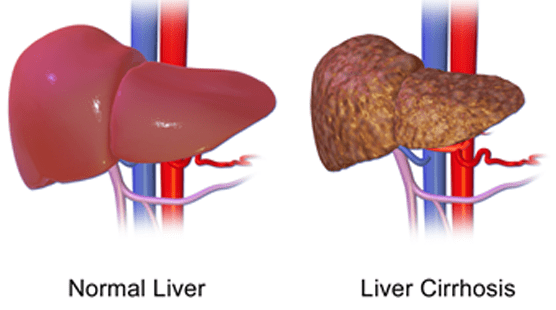
Liver cirrhosis symptoms
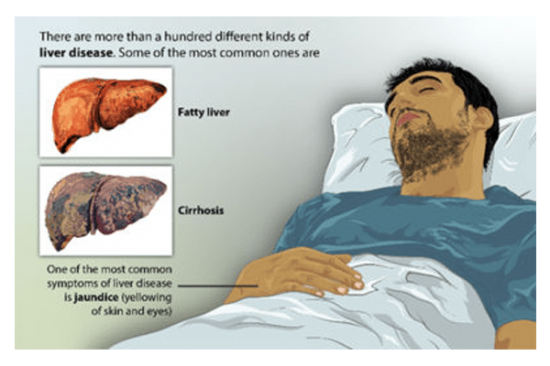
cirrhosis symptoms
You might not have any side effects from the start. In any case, over a period of time as the damage to your liver deteriorates, you can notice these early signs of cirrhosis of the liver
- Fatigue and weakness
- Lack of appetite and weight loss
- Nausea
You could likewise bleed or bruise easily and have swelling in your legs or abdomen. You may likewise see changes in your skin, for example:
- Jaundice (when your skin and eyes turn yellow)
- Too much itching
- Spider web like blood vessels in your skin
- Redness in the palms of your hands or whitening of your nails
You could have a few changes to the way in which you think, for example, issues with concentration or memory. In case you’re a woman, your periods may stop. In case you’re a man, you could lose your sex drive etc.
Some different indications you may get are:
- Vomiting blood
- Serious muscle cramps
- Yellow urine
- Fever
- Enlarged spleen
- Bone infection, making bones break easily
Remember that you may not get every one of these manifestations, and a part of these issues are additionally indications of different conditions.
Causes of cirrhosis
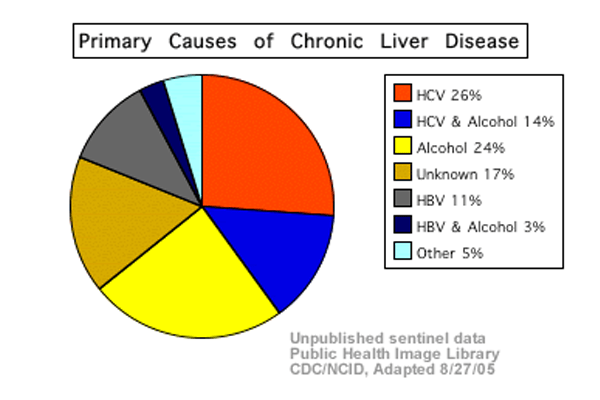 Cirrhosis doesn’t occur overnight. You put pressure in your liver over an extensive period of time. The most widely recognized things that raise your chances for cirrhosis are:
Cirrhosis doesn’t occur overnight. You put pressure in your liver over an extensive period of time. The most widely recognized things that raise your chances for cirrhosis are:
- Substantial drinking because of alcohol dependency
- Obesity, which raises your chances of suitable conditions that lead to cirrhosis
- A prolonged hepatitis B or hepatitis C disease
Cirrhosis and NAFLD
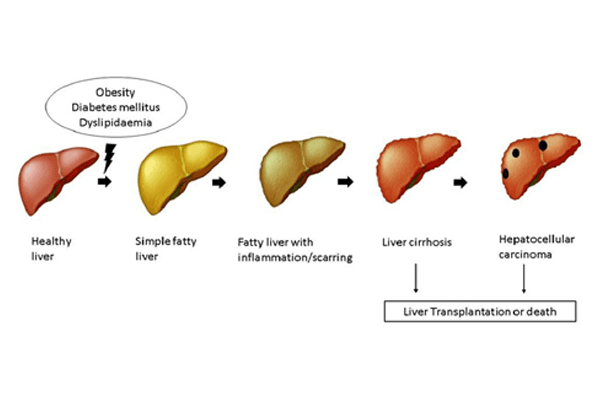 Cirrhosis is the end phase of a wide number of constant liver conditions that share common characteristics of necroinflammation, fibrosis, and regenerative nodules, which modifies the typical liver structure to lessen its functional mass and change the vascular design. Cirrhosis has become a significant common medical issue and a huge reason for death and mortality. Liver cirrhosis is widely connected with NASH (nonalcoholic steatohepatitis).
Cirrhosis is the end phase of a wide number of constant liver conditions that share common characteristics of necroinflammation, fibrosis, and regenerative nodules, which modifies the typical liver structure to lessen its functional mass and change the vascular design. Cirrhosis has become a significant common medical issue and a huge reason for death and mortality. Liver cirrhosis is widely connected with NASH (nonalcoholic steatohepatitis).
It is the thirteenth most common reason for mortality overall. Worldwide cirrhosis deaths have expanded from 1.54% of all deaths in 1980 to 1.95% in 2010, causing more than one million deaths every year. The most widely recognized causes for cirrhosis are long-term hepatitis B, alcoholic liver disease, chronic hepatitis C, and nonalcoholic fatty liver disease (NAFLD) or NASH (nonalcoholic steatohepatitis).
Chronic hepatitis B is the most widely recognized reason for cirrhosis in many pieces of Asia and sub-Saharan Africa, though alcoholic liver diseases and chronic hepatitis C are the fundamental reasons in most developed nations. As of lately, with the rising frequency of obesity, nonalcoholic fatty liver disease and NASH (nonalcoholic steatohepatitis) has proven to be one of the main sources of cirrhosis in certain nations.
By 2020, the quantity of people with NAFLD cirrhosis is anticipated to surpass that of those with hepatitis B-and C-related cirrhosis, and NAFLD cirrhosis will turn into the main cause for liver transplantation.
With the on-going pandemic of obesity and metabolic condition, nonalcoholic fatty liver disease has become the most widely recognized reason for constant liver diseases overall. The worldwide occurrence of NAFLD was evaluated to be about 24%. Cirrhosis is a significant factor for liver-related illness and mortality in patients with nonalcoholic fatty liver disease. Moreover, despite everything we don’t have a nitty gritty comprehension on how frequently NAFLD cirrhosis happens. Existing investigations with various examination objects, analytic techniques, and other variable boundaries indicated the fluctuating epidemiological consequences of NAFLD cirrhosis.
Cirrhosis Treatment
Your primary care physician may arrange at least one tests that may suggest an issue with your liver, including:
Laboratory tests – Your primary care physician may arrange blood tests to check for indications of liver damage, for example, too much bilirubin, just as for certain enzymes that may show liver damage. To check kidney function, your blood will be checked for creatinine. You’ll be screened for the hepatitis infections. Your international normalized ratio (INR) is additionally checked for your blood’s capacity to clot.
After the blood test results, your doctor might have the option to analyse the hidden reason for cirrhosis. The person can likewise utilize blood tests to help recognize how progressive your cirrhosis is.
Imaging tests – Magnetic resonance elastography (MRE) might be suggested. This non-invasive progressive imaging test detects hardening or stiffening of the liver. Other imaging tests, for example, MRI, CT and ultrasound, may likewise be done.
Biopsy – A tissue test (biopsy) isn’t really required for finding cirrhosis. Nonetheless, your primary care physician may utilize it to find out the seriousness, degree and reason for your liver damage.
If you have cirrhosis, your primary care physician is probably going to prescribe regular indicative tests to screen for indications of damage progression or complexities, particularly oesophageal varices and liver cancer. Non-invasive tests are getting all the more broadly accessible for testing.
In early stages of cirrhosis, it might be conceivable to limit damage to the liver by treating the basic causes of cirrhosis. The alternatives include:
Treatment for liquor dependency – Individuals with cirrhosis caused by excessive liquor use should attempt to quit drinking. If there is a problem in stopping alcohol dependency, your primary care physician may suggest a treatment program for liquor addiction. If one has cirrhosis, it is important to quit drinking since a little amount of liquor is poisonous to the liver.
Weight reduction – Individuals with cirrhosis brought caused by nonalcoholic fatty liver infection may get healthier if they start losing weight and control their sugar levels.
Medicines to control hepatitis – Prescriptions may restrain further damage to liver cells brought about by hepatitis B or C through explicit treatment of these infections.
Meds to control different causes and manifestations of cirrhosis – Prescriptions may slow down the progress of specific kinds of liver cirrhosis. For instance, for individuals with primary biliary cirrhosis that is detected at an early stage, drug may altogether postpone the development of cirrhosis.
 Researchers are attempting to grow current medicines for cirrhosis, yet achievement has been limited. Since cirrhosis has various causes and difficulties, there are numerous ways of approach. A mix of increased screening, way of life changes and new medicines may improve results for individuals with liver damage, if started at an early stage.
Researchers are attempting to grow current medicines for cirrhosis, yet achievement has been limited. Since cirrhosis has various causes and difficulties, there are numerous ways of approach. A mix of increased screening, way of life changes and new medicines may improve results for individuals with liver damage, if started at an early stage.
Specialists are researching on treatments that will explicitly target liver cells, assisting with slow down or even converse the fibrosis that develops into cirrhosis. While no targeted treatment is ready as of now, the system for growing such medicines is set up, and progress is quickening.
Understanding biliary cirrhosis and how it affects life
Living a healthy lifestyle is something that we all desire. Unfortunately, at some time or the other, we encounter illnesses along the way that impact our life. No matter how hard we try, some or the other illness catches us. People who live a clean and healthy lifestyle can also fall prey to deadly diseases. Many diseases can be treated, while there are some that cannot be. Various factors like our eating habits, genes, stress levels, family history, and more are what determine our illness.
To tackle them and live a healthy life, we need to make sure to always eat well and exercise on a regular basis. But, given that most of our current lifestyle habits which include eating at odd hours, eating unhealthy foods, living a sedentary lifestyle, etc., threading on the healthy path may seem impossible. We have so many options and temptations that come our way that we often neglect our health.
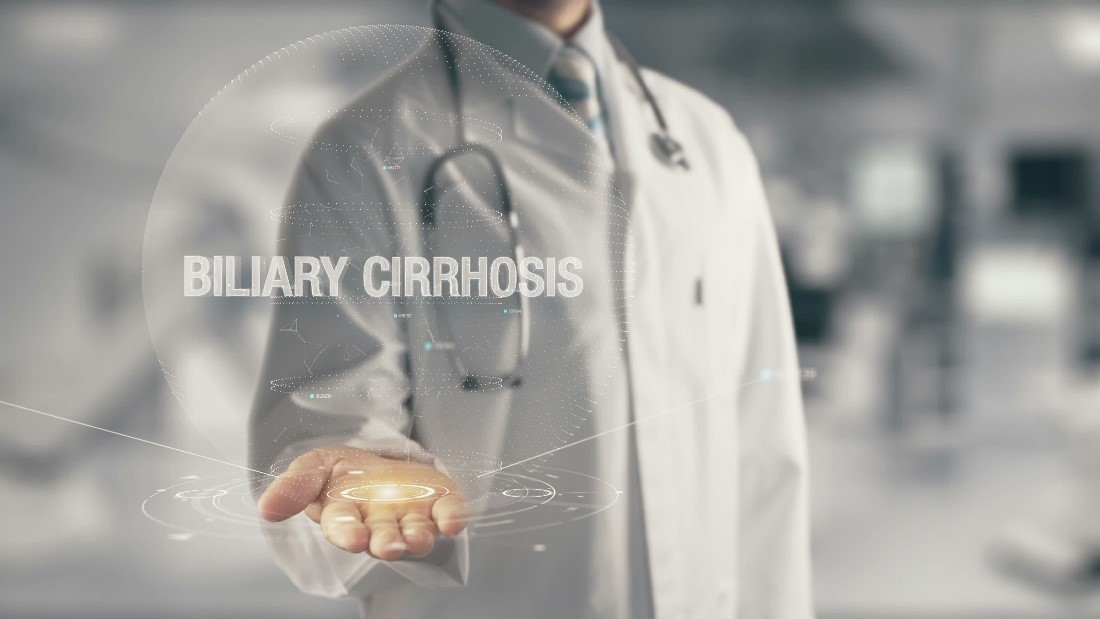
Illnesses are known to target our blood cells and organs. Many a times, the disease reaches a stage, where people need to undergo organ transplantation. Every organ in our body is vital and ensuring each of its well-being is in our hands. One of the most important and precious organs in our body is the liver. It undergoes a lot of stress due to our unhealthy lifestyle habits. Many people encounter problems like NASH, biliary cirrhosis and more
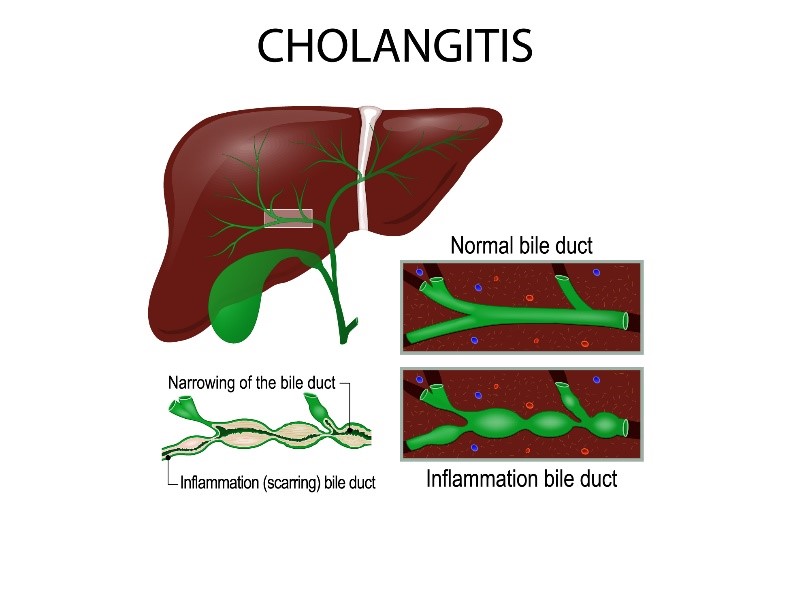
Let’s take a look at how biliary cirrhosis affects our lives and what is the road ahead for those with this disease. To understand, let’s look at all the aspects that encompass the causes, symptoms, treatment option, diet and more.
An in depth analysis will make us understand better what needs to be done and what are the opinions of health care professionals.
What is biliary cirrhosis?
Primary biliary cirrhosis was the former name for primary biliary cholangitis. It is a chronic disease in which the bile ducts in the liver get destroyed slowly, over a course of time. In our body, bile is a fluid which is made by the liver. It helps with digestion and helps absorb few forms of vital vitamins. It plays an important role in getting rid of cholesterol, toxins and worn-out red blood cells from the body as well. Prolonged or chronic inflammation in the liver can cause damage to the bile duct causing irreversible scarring of liver tissue which is known as cirrhosis. This then continues to lead to liver failure in the future.
Biliary cirrhosis affects both men and women but it is mostly a condition seen in women. It is classified as an autoimmune disease. What is an autoimmune disease? It is when your body’s immune system is unknowingly attacking healthy cells and tissue in the body. As per various studies by researchers, genetic and environmental factors are major triggers for this form of disease. It takes a long time, years even to develop. At present, there is no cure for biliary cirrhosis.
Doctors these days recommend various medications to slow down the damage which helps if detected early on. For any disease to be treated, it is important that it is detected sooner. The faster the onset of treatment begins, the more the chances are of a full recovery in most cases, given that the medication works towards reversing the effects of the problem.
What is liver cirrhosis ICD 10?
To understand liver cirrhosis icd 10, we first need to touch upon what liver cirrhosis is. It is a disorder that is usually caused due to alcoholism, hepatitis b, and hepatitis c. With the disease come certain complications like the development of ascites, bleeding, esophageal varices and hepatic encephalopathy. It is a type of diseases that keeps progressing with time and where the liver cells are replaced by scar tissues.
Cirrhosis is the scarring of the liver which can prove to be fatal. Ignoring liver problems early on is what leads to scarring of the liver as we grow older. It is therefore recommended that when any problem arises, getting treated immediately is a wise option. A healthy liver is known to make protein, help fight infections, cleanse the blood, digest food and store the energy our body requires. All this cannot happen if the liver is scarred. If further ignored, people could get liver cancer too.
There are liver cirrhosis icd 10 codes that are used to determine the disease. This helps doctors to treat the disease more effectively. The icd 10 codes are further divided depending on the causes and type of liver disease one suffers from.
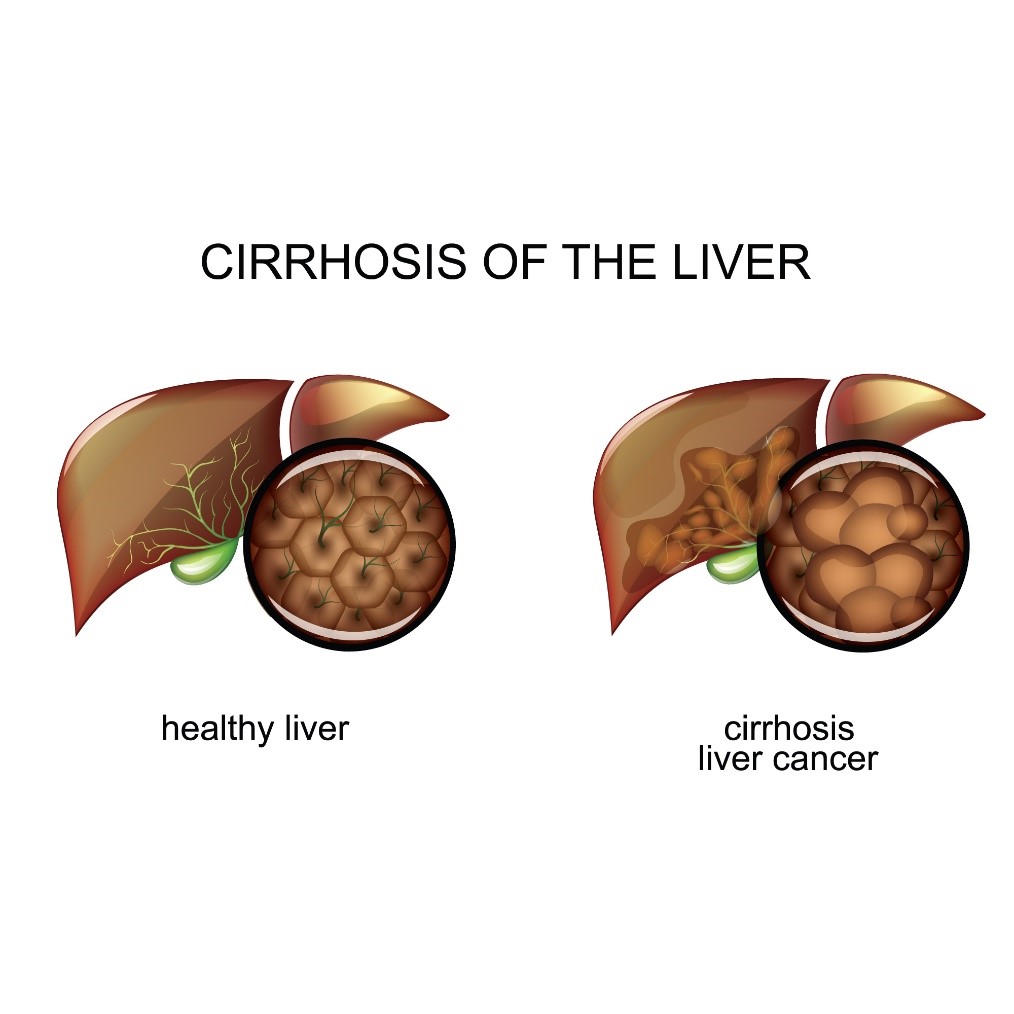
Treating liver disease can never be easy. There are lifestyle changes that one would need to make to stop or slow down the progression of liver cirrhosis. By following a proper diet plan and exercising regularly or as recommended by the doctor, a person may be able to lead a better quality of life.
What liver cirrhosis diet is recommended?
A well planned liver cirrhosis diet can go a long way in ensuring that your health is in check. Eating healthy is what your medical professional will also recommend. So make sure that you eat right. Here are few foods that your doctor will emphasise on consuming:
- Fruits like apples, berries, oranges, pears, peaches, plums should be consumed.
- Your vegetable intake should consist of broccoli, cauliflower, asparagus, tomatoes, peas, potatoes.
- Add protein foods to your diet which are eggs, dairy products, seafood, lean meat and poultry.
- Beans, lentils, chickpeas are the lentils you should eat.
- Nuts are always a healthy choice. Make sure to consume walnuts, almonds, cashews, pistachios, and macadamias.
- Seeds like pumpkin seeds, flaxseed, chia seeds, hemp seeds are extremely beneficial for those with liver cirrhosis.
- Whole grains like quinoa, oats, brown rice, buckwheat are also highly recommended.
- Consume only healthy fats like olive oil, avocados, avocado oil, salmon, nuts, seeds.
- Beverages that you can consider drinking are water, coffee or tea.
- Herbs and spices like black pepper, cumin, dill, parsley, thyme are all good for your health.
There are quite a few foods that must be avoided. Processed foods like packaged snacks and fast foods must be avoided. Also, do not have unhealthy fats, salty snacks, processed meats, undercooked foods and alcohol. All these can worsen the condition of the liver and must be avoided at all costs. The foods that are allowed are healthy and also quite tasty. Look up some good recipes and follow your liver cirrhosis diet religiously.
What are biliary cirrhosis signs and symptoms?
Biliary cirrhosis signs and symptoms are generally not noticeable. It is therefore extremely vital to get a medical test done once in a while to rule out the possibility of any disease for that matter. During routine testing, the doctor may get to know that you have this condition. For symptoms to show up, it may take anywhere between 5 to 20 years.
The people who experience symptoms, generally experience the following:
- Feeling of fatigue
- Extremely itchy skin
- Dryness is experienced in the eyes and mouth
- Pain the upper right abdomen
- Swelling of the spleen
- Bone, muscle and joint pain
- Swollen feet and ankles
- Build-up of fluid in the abdomen which is because of liver failure
- Xanthomas is a condition where there are fat deposits on the skin particularly around the eyes or in the creases of the palms, soles, etc.
- Yellowing of the skin also known as jaundice
- Hyperpigmentation
- Weak bones that easily cause fractures
- High cholesterol
- Diarrhoea
- Underactive thyroid
- Weight loss
All these symptoms are experienced by some people only. Most of the times, people are not aware of the problems that they may be facing because these are symptoms that may be common to other diseases as well. Hence, a routine check-up once in a while is always recommended by health care professionals. As we grow older, it becomes all the more important to get these tests done to rule out the possibility of any serious health issues.
What are the biliary cirrhosis causes that occur in people?
There are diseases that are still being studied. The causes of their origin are still a question mark. Similarly, biliary cirrhosis causes are also not very clear. More studies are underway to determine the causes. Many reputed experts believe that it may be an autoimmune disease. In such cases, the body attacks its own cells causing severe health implications.
According to researchers who are studying it in detail, think that genetic and environmental factors may be responsible for the cause of biliary cirrhosis. Over the years, there may be a clearer picture.
How does it all start? The liver inflammation that is seen in primary biliary cirrhosis begins when some types of white blood cells known as the T cells (T lymphocytes) start to accumulate in the liver. Generally, the immune cells detect and help defend against germs, like bacteria and viruses. But in primary biliary cirrhosis, they unknowingly destroy the healthy cells which line the small bile ducts in the liver. When inflammation in the smallest duct happens, it leads to the damage of other cells in the liver. When this happens, scar tissues which are also known as fibrosis occur and this in turn causes cirrhosis of the liver.
Since the biliary cirrhosis causes are not clear, doctors recommend that one must keep their liver healthy by eating healthy and regularly exercising. Lifestyle factors play a big role in affecting our organs and overall health. Therefore, it is of utmost importance that we care for our liver from the very beginning to avoid complications in the future.
Even though the causes are not clear, there are certain risk factors that have been determined:
- Biliary cirrhosis is often seen more in women even though men are prone to it.
- People between the ages of 30-60 are most likely to get it.
- Family history matters when it comes to biliary cirrhosis. If a family member has it, you’re also at risk of having it.
- Even though this condition occurs to all races of people, it is mostly seen in people from the Northern European decent.
- A urinary tract infection could also be a risk factor.
- Smoking is also extremely harmful for the liver and must be avoided.
- Toxic chemicals can play a role in being risky for the liver.
What are the biliary cirrhosis treatment options available?
It is unfortunate for those who encounter biliary cirrhosis as there is no specific treatment for it. There are many diseases that have no specific treatment plans which makes it all the more difficult for people coping with the disease. There are some medications that the doctor would prescribe to a patient. But these medications are in no way to be mistaken for a cure. They only slow down the progression of the disease.
The liver is an amazing organ in our body that is known to regenerate itself in times of injuries. But, when diseases like cirrhosis occurs, the liver is not able to heal itself despite any lifestyle changes or medications. Why? Firstly, it takes years for a disease like biliary cirrhosis to develop. Secondly, when it is detected at such a late stage, there is not much a person can do. The actual biliary cirrhosis treatment that a doctor would recommend would be eating good and nutritious food and exercising regularly.
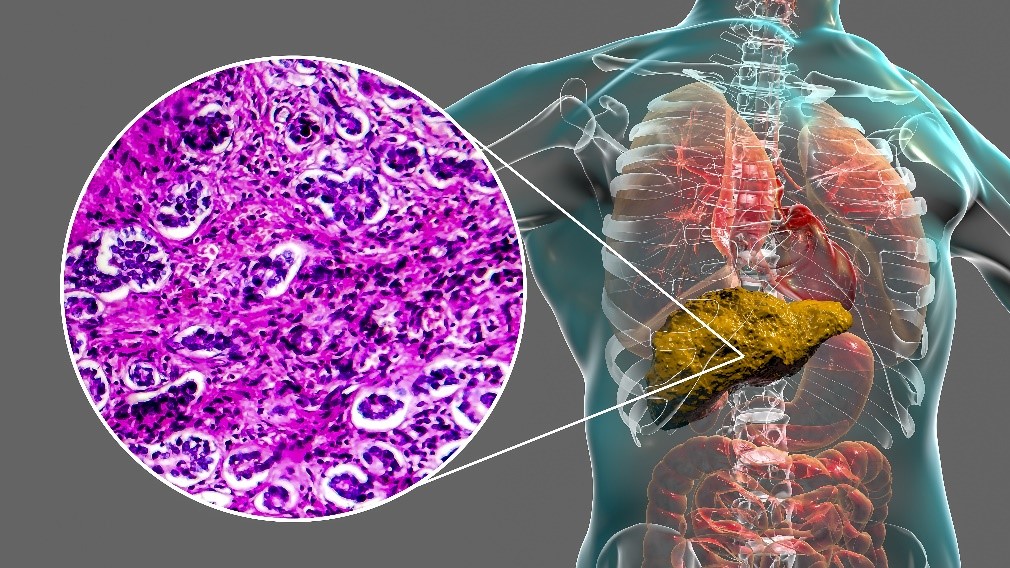
Medications such as Ursodeoxycholic acid, Obeticholic acid, Fibrates, Budesonide will be prescribed.
In case of liver failure, the biliary cirrhosis treatment option would be liver transplant. For those who face this problem due to complications from other diseases, the doctor will recommend some vitamin supplements, medications to lower cholesterol, medicines that tackle bone loss related problems and medicines for hypertension too.
Your doctor will study your case in depth to understand what other illnesses that you may have and will accordingly chart out a biliary cirrhosis treatment plan. This will ensure that there are minimal to no medical side effects.
What is the biliary cirrhosis life expectancy for most people?
As we mentioned earlier, biliary cirrhosis does not have specific symptoms and is not very easy to even detect. People who have the condition may not know for years. It is likely to show up in routine medical tests. As it is undiagnosed in most cases, a person lives a normal life until it is detected. For the first 10 years, the symptoms do not show up easily. Some may experience it within 5 years or so.
The biliary cirrhosis life expectancy of people who are in Stage 1 and Stage 2 of the condition, lead a pretty normal life. If someone experiences advanced symptoms, they may have about 10-15 years of life.
Each of our bodies is different. Some people make sure to lead a healthy lifestyle and improve their health while the others completely neglect their health. In such cases, the biliary cirrhosis life expectancy of people can differ from person to person. No one can definitely say what may happen. In some cases, people have other complications which may further cause more problems for them. Each person being different will be treated differently too. The doctor will analyse all possible factors and tell patients about the do’s and don’ts in order to lead a longer life with lesser complications.
For those who completely ignore their condition and continue to eat unhealthy, stress more and don’t exercise, the biliary cirrhosis life expectancy of these people may be reduced. Neglecting health will only lead to more problems. But, for those who can’t afford medications or dislike taking medications, there is no way to convince them. Each of our lives is our own and how we lead it is in our hands at the end of the day. For those who cannot afford medication can always visit health camps and take advantage of government initiatives that provide free medication. In that way, they can continue being healthy by getting treated in an accurate and timely manner.
How is biliary cirrhosis diagnosis done?
Since there is no symptom that shows in case of biliary cirrhosis, the doctor will make you undergo certain tests. For biliary cirrhosis diagnosis, your doctor will ask about your medical and family history. Further, a physical examination will be conducted. Blood tests and other medical tests will also be asked to be done so as to determine the exact cause. When the blood test is done, the doctor will be looking for a specific substance known as the anti-mitochondrial antibody (AMA).
The presence of this substance almost always confirms biliary cirrhosis in a person. In case of other blood test results in patients with this condition, it may show higher than normal levels of liver enzymes. Also, high levels of cholesterol and triglycerides will be noticeable. Blood work, which is specific for liver disease, will also be checked for the doctor to be absolutely sure.
In case the biliary cirrhosis diagnosis is confirmed, the doctor will then ask you to undergo an ultrasound test as well. What will the ultrasound reveal? Well, it will show images of the liver and the bile ducts. These will show any abnormal findings. Additionally, to confirm the diagnosis, a liver biopsy may also be conducted. A biopsy is where a small piece of the liver is removed and sent to the lab. In the lab, they look at it under the microscope to check for abnormalities. This then provides a clearer picture of what liver disease you have. None of the tests are painful in nature and throughout the medical examinations, try staying calm.
Stressing over the illness will only deteriorate your health. For an accurate biliary cirrhosis diagnosis, make sure to undergo all the tests that your doctor recommends.
How can biliary cirrhosis be prevented?
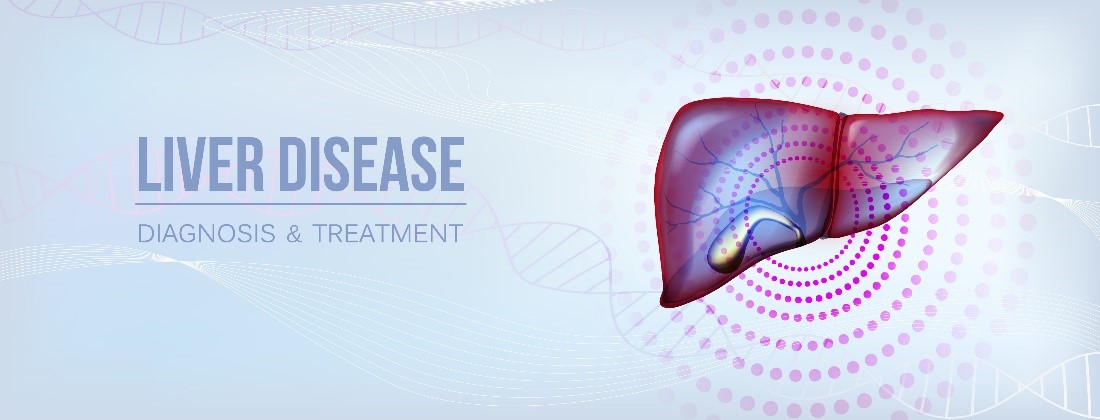
Since the causes of why biliary cirrhosis happens are not concrete, experts cannot comment on whether it can be prevented or not. However, there are some things that the doctor will ask you to do in order to lower your chances of the disease progressing any further. These are things that are harmful for our bodies irrespectively.
So, in case your family member or members have a history of biliary cirrhosis and you are at risk or you have encountered recent problems that relate to the liver, then here is what you should do:
- Smoking excessively needs to stop. Discontinue for good even if you smoke just one cigarette a day.
- Stay off alcohol. In case you feel the urge to drink, limit yourself to one or two drinks.
- Do not consume illegal drugs as they are harmful for your overall health.
- As prescribed, consume all the medicines you need to.
- Eat a whole and balanced meal.
- Stay fit by exercising daily. Putting in a few minutes of your day to work out is good for your overall health.
When it comes to eating a well-balanced meal, your doctor will recommend foods that are rich in A, D, E and K vitamins. Essential minerals will take care of a lot of health problems that you may be facing and will prevent future problems.
In conclusion, biliary cirrhosis is a disease that progresses with time. Though the damages cannot be reversed and there is no cure, the least you can do is work towards slowing down the progression by meticulously following your doctor’s instructions. Biliary cirrhosis prevention is not in anyone’s hand. But, keeping a check on your health is. Make sure to schedule health check-ups once in a while to rule out the possibility of any serious illness. Also, try not neglecting the problem. So, no matter how difficult it may seem, eat clean and healthy. Make sure to get your daily dose of exercise. Keep stress at bay. And live a happy life.
Content source:
https://www.mayoclinic.org/diseases-conditions/primary-biliary-cholangitis/symptoms-causes/syc-20376874#:~:text=When%20bile%20ducts%20become%20damaged,your%20liver%20are%20slowly%20destroyed.
https://www.icd10data.com/ICD10CM/Codes/K00-K95/K70-K77/K74-/K74.60
https://www.healthline.com/nutrition/liver-cirrhosis-diet#foods-to-eat-and-avoid
https://www.mayoclinic.org/diseases-conditions/primary-biliary-cholangitis/diagnosis-treatment/drc-20376880
https://www.healthline.com/health/primary-biliary-cirrhosis#:~:text=People%20with%20PBC%20may%20not,is%20about%2010%2D15%20years%20.
https://my.clevelandclinic.org/health/diseases/17715-primary-biliary-cholangitis-pbc-
